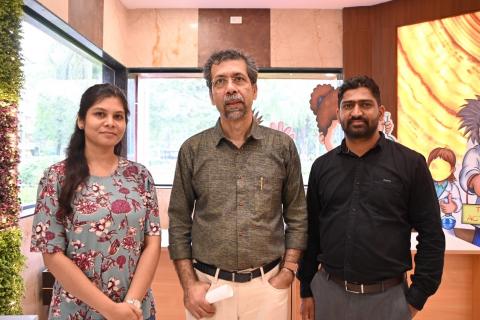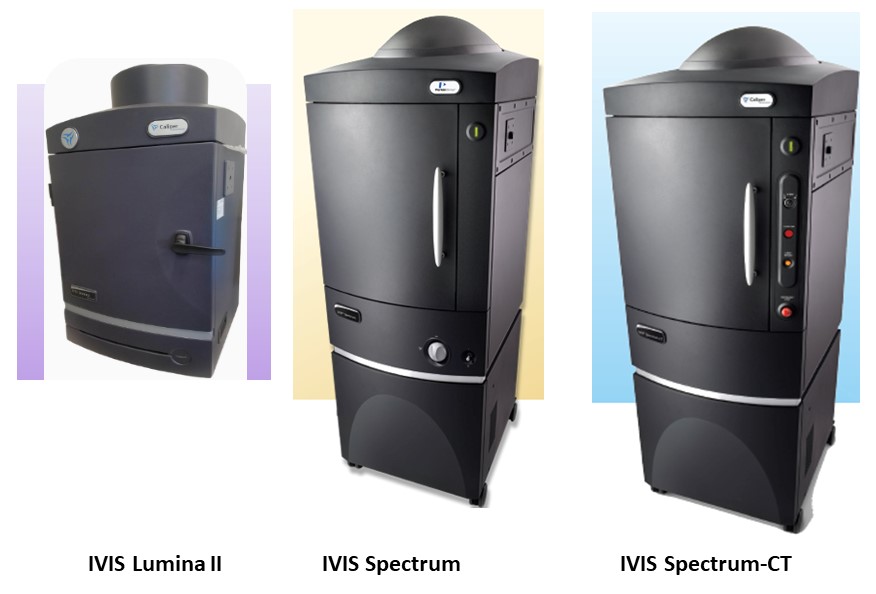Molecular Imaging

Considering the growing importance of detecting cancer in a whole-body context of preclinical model organisms that the researchers use in experimental settings, the Molecular Imaging Facility (MIF) was envisioned by Dr. Abhijit De. The MIF facility started its operation in 2013, offering advanced imaging capacity for both live cell population and preclinical in vivo imaging services to researchers. This core facility supports imaging based on three forms of photonic signatures, i.e. Bioluminescence, Cerenkov luminescence and Near InfraRed Fluorescent (NIRF), providing valuable molecular and functional information from whole body context. Current equipment provide ability to scan live cells and small animals to support longitudinal monitoring of disease progression, tracking therapy response and tracking biodistribution of labelled cells and materials. Fast scanning process allows rapid generation of high-quality imaging data for visualization and quantitative analysis. This facility has established track record of supporting imaging work for in-house researchers as well as external research collaborations with institutions and industries.
The facility is currently equipped with three In Vivo Imaging Systems (IVIS) platforms along with supporting gadgets like gas anaesthesia and dedicated computing resources for image acquisition and analysis:
- IVIS Lumina II (PerkinElmer, USA)
- IVIS Spectrum (PerkinElmer, USA)
- IVIS Spectrum CT (Revvity, USA formerly PerkinElmer, USA)
IVIS Lumina II
- Both live cell and live animal imaging in luminescence mode.
- Allows scanning of upto 3 mice at a time.
- Equipped with four standard fluorescence emission filters GFP, Cy5.5, DsRed and ICG.
IVIS Spectrum
- Both live cell and live animal imaging in bioluminescence, Cerenkov luminescence and NIR fluorescence mode.
- Allow upto 5 mice per scan in 2D planar mode and 1 mouse for 3D tomographic imaging mode
- Wide range of filter set to support spectral unmixing (10 Excitation filters in the range of 430-745 nm, 35 nm bandwidth and 18 Emission filters covering 500-840 nm, 20 nm bandwidth). Spectral unmixing imaging capacity provides scope of using multiple probes emitting non-overlapping photonic signatures.
IVIS Spectrum CT
- Both live cell and live animal imaging in bioluminescence, Cerenkov luminescence and NIR fluorescence mode.
- Allow upto 5 mice in 2D planar scanning mode and upto 2 mouse for 3D scanning mode
- This system provides full 3D tomographic imaging support with coregistered optical signals with precise anatomical (CT) images for volumetric reconstruction of molecular signals.
- Wide range of filter set to support spectral unmixing (10 Excitation filters in the range of 430-745 nm, 35 nm bandwidth and 18 Emission filters covering 500-840 nm, 20 nm bandwidth). Spectral unmixing imaging capacity provides scope of using multiple probes emitting non-overlapping photonic signatures.

- Non-invasive, real-time in vivo imaging allowing longitudinal monitoring of disease progression.
- Primarily used for oncology research applications using rodent models (Xenografts, Syngeneic Tumor Models, Orthotopic and Metastasis models); can be extended to other areas like inflammatory, infectious and neuronal disease models.
- Efficacy measurement of various forms of therapy interventions and biodistribution and uptake studies to understand material cellular distribution in whole animal context.
- Imaging stem cell graft differentiation, testing cell / medical implants in vivo using suitable phantom or model system.

- Users are required to submit signed End User Form before starting new experiments. Email the End User at Form to - Email id mifacility[at]actrec[dot]gov[dot]in
- An online booking software is created to book imaging slots. Users can book slots via URL http://10.100.36.253/FacilityEquipBooking by entering last 6 digits of their CC number and password.
- Booking slots open a week before; no more than 2 consecutive time slots can be booked by any user.
- External service users can contact MIF facility directly and discuss requirements.
Committee Members -
- Dr. Abhijit De
Principal Investigator and Scientific Officer ‘H’
Email: ade[at]actrec[dot]gov[dot]in - Dr. Syed Hasan
Principal Investigator and Scientific Officer ‘F’
Email: shasan[at]actrec[dot]gov[dot]in
Student Members:
Ms. Priti Shenoy
Mr. Jinesh Maniar
Facility In-charge: Ms. Snehal Valvi
Email: snehal.valvi[at]actrec[dot]gov[dot]in
Facility Staff: Mr. Amandeep Jast
Email: jastaman[dot]actrec[at]gmail[dot]com
Molecular Imaging Facility
AH-105 and 107, First Floor, Laboratory Animal Facility, ACTREC, TMC
Plot No.1 & 2, Sector 22
Kharghar, Navi Mumbai - 410 210.
Contact: 022-27405000 / 022-68735000 and ask for extension 5682
Email: mifacility[at]actrec[dot]gov[dot]in

